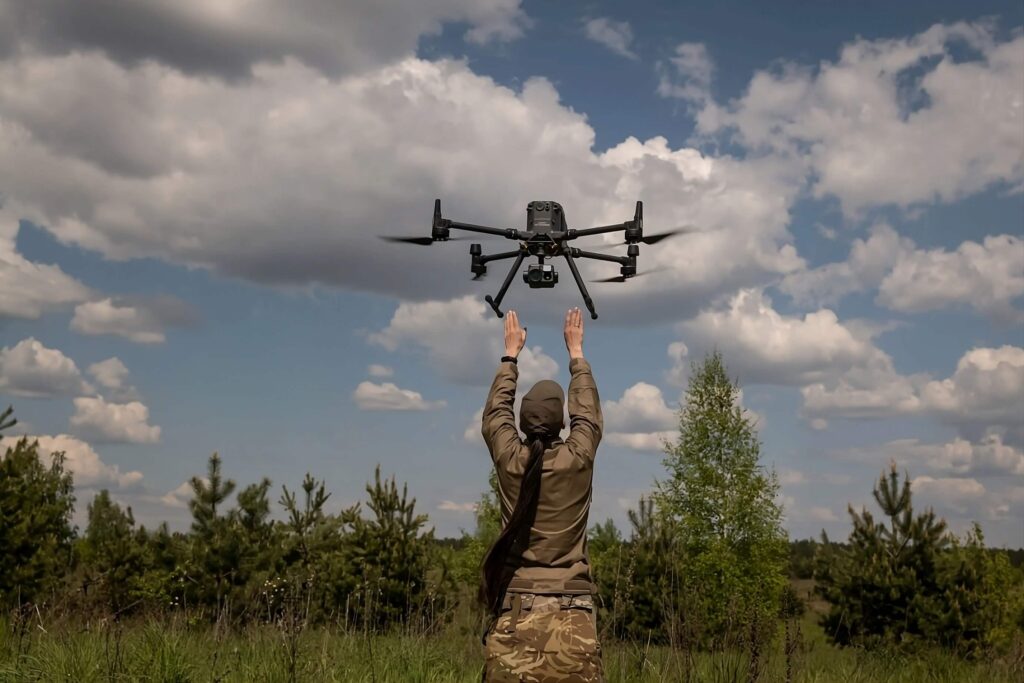Ukraine’s war against Russia has taken a bold, unsettling turn. For months, we’ve watched Kyiv’s forces pivot from the grinding, attritional battles along the front lines to a strategy that’s as audacious as it is calculated: striking deep inside Russian territory with drones. These aren’t mere pinpricks. They’re daily, deliberate blows aimed at the heart of Russia’s war machine—its factories, airfields, and logistics hubs. The shift, which began in earnest with what some call Operation Spiderweb in June, signals a profound change in how Ukraine intends to fight. It’s not about holding every inch of ground. It’s about denying Russia the ability to wage war at all. And frankly, it’s hard not to see the genius in it, even if the implications are unnerving.
The logic is brutal in its simplicity. Russia, with its 146 million people, dwarfs Ukraine’s roughly 22 million in free territory. In a traditional war of attrition, the math is merciless. Russia can afford to throw bodies into the meat grinder, as it has done for centuries, exhausting smaller opponents through sheer numbers. Ukraine, with its limited manpower, can’t play that game. Nor should it. Instead, Kyiv has chosen to rewrite the rules, refusing to be drawn into a contest of who can bleed more. This isn’t cowardice or retreat—it’s a cold-eyed recognition of reality. Ukraine is trading land, often empty or strategically marginal, to preserve its soldiers and strike where Russia is vulnerable. Swamps, abandoned villages, and barren fields aren’t worth dying for when the real fight lies elsewhere.
What’s striking about this strategy is how it upends the traditional calculus of war. Ukraine isn’t just defending its borders; it’s waging a kind of asymmetric warfare that brings the conflict to Russia’s doorstep. Drones, some homemade, others sophisticated, are now a near-constant presence over Russian skies. They’ve hit military bases, destroyed fighter jets, and set fire to the factories that churn out the weapons fueling Putin’s invasion. These aren’t random acts of sabotage. They’re surgical strikes aimed at dismantling the infrastructure that makes Russia’s war possible. A factory producing a critical component for drones or explosives isn’t easily replaced, especially when Russia’s economy is already stretched thin and reliant on foreign parts. Iran, a key supplier, is distracted by its own troubles, leaving Russia’s supply chain exposed. You get the picture: Ukraine is hitting Russia where it hurts most, not on the battlefield but in the sinews of its war effort.
This approach is a gamble, but a calculated one. Ukraine’s leaders know they can’t match Russia’s manpower or resources. So they’ve chosen to fight smarter, not harder. By targeting Russia’s military-industrial complex, they’re forcing Moscow to divert resources from the front lines to defend its own territory. Airfields are now under constant threat, forcing Russia to spread its air defenses thin. Factories that once operated with impunity are now at risk, disrupting production and sowing doubt among the workers and managers who keep Russia’s war machine running. It’s tempting to think of this as a David-versus-Goliath story, but that framing oversimplifies things. Ukraine isn’t just slinging stones; it’s dismantling Goliath’s arsenal, piece by piece.
What’s troubling, though, is how little attention this shift gets in Western headlines. Too often, the focus is on Ukraine’s territorial losses, as if every village ceded to Russia is a sign of defeat. This misses the point entirely. Ukraine’s strategy isn’t about holding ground today; it’s about winning the war tomorrow. By preserving its soldiers and striking Russia’s capacity to fight, Kyiv is laying the groundwork for a counteroffensive that could reclaim its land later. The West’s obsession with linear metrics—kilometers gained or lost—ignores the deeper game Ukraine is playing. It’s a game of attrition, but not the kind Russia wants. Ukraine is attriting Russia’s ability to sustain the war, not its own.
The ripple effects of this strategy extend beyond the battlefield. Inside Russia, the drone strikes are shattering the illusion of invulnerability that Vladimir Putin has carefully cultivated. For years, his regime has rested on a simple bargain: ordinary Russians may lack freedom, but they get security and stability in return. That promise is crumbling. Drones buzzing over Moscow and St. Petersburg, airports shut down for hours or days, and videos of panicked travelers sleeping on terminal floors are impossible to ignore. The Russian elite, who once flew above the consequences of Putin’s policies, now find themselves grounded alongside everyone else. Private jets or budget airlines—it doesn’t matter when the airspace is closed. This isn’t just an inconvenience; it’s a psychological blow. If Putin can’t protect Russia’s skies, what can he protect?
The social contract in Russia is fraying, and the cracks are most visible among the elites. Only about 29% of Russians hold foreign passports, with the number rising to just over 50% in cities like Moscow and St. Petersburg. These aren’t the masses; they’re the middle and upper classes—the bureaucrats, businesspeople, and decision-makers who prop up Putin’s system. When they’re stuck in airports or watching drones strike their cities, they start to question the regime’s competence. Insurance actuaries, for instance, must be recalculating risks as factories burn and supply chains falter. Higher premiums mean higher costs, which ripple through an already strained economy. For a regime that depends on the loyalty of these elites, this is a dangerous moment. History shows that dictators fall not when the masses revolt, but when the elites turn against them. Putin, for all his bluster, must know he’s skating on thin ice.
The chaos isn’t limited to the elite. Ordinary Russians, already burdened by a stagnant economy, are feeling the strain of a war that’s come home. The closure of airspace in major cities disrupts lives and livelihoods. The Kremlin’s attempts to control the narrative—shutting down Telegram, WhatsApp, and swaths of the internet across 69 regions—only highlight its desperation. Censorship can’t hide the reality of drones overhead or the growing sense that Russia is losing control. This isn’t just a military problem for Putin; it’s a political one. Every factory hit, every airport closed, chips away at the myth of his unassailable power.
And then there’s the corruption. The recent death of Russia’s transport minister—officially a gunshot wound, suspiciously timed after his firing—lays bare the rot within Putin’s regime. The minister was under investigation for embezzling $246 million meant to fortify Kursk against Ukrainian attacks. Instead, the money vanished, and Ukraine not only attacked but briefly occupied parts of Kursk. This isn’t an isolated incident. Corruption permeates every level of Russia’s military and government, from the generals who promoted the minister to cover their own tracks to the intelligence services that fail to stop Ukraine’s drones. When a regime is this riddled with graft, it’s not just fighting an external enemy—it’s fighting itself.
Ukraine’s strategy, for all its brilliance, isn’t without risks. The West’s reluctance to fully back Kyiv’s deep strikes—urging restraint on attacks against Russia’s oil refineries or shadow fleet—reflects a broader hesitation to escalate. This caution is understandable but misguided. Ukraine’s drone campaign isn’t reckless; it’s a lifeline. By targeting Russia’s war-making capacity, Kyiv is doing what the West often fails to do: confronting Putin’s aggression head-on. The longer Western leaders dither, the harder it becomes for Ukraine to sustain this momentum. That should be a wake-up call.
Looking ahead, Ukraine’s drone war could redefine the conflict. It’s not just about destroying a factory or downing a jet; it’s about breaking Russia’s will to fight. By taking the war to Russian soil, Ukraine is exposing the fragility of Putin’s regime—its corruption, its incompetence, its inability to protect its own people. The question isn’t whether Ukraine can hold every village along the front. It’s whether it can keep Russia off balance long enough to force a reckoning. If the drone strikes continue, and if the West finally steps up, the answer might just be yes. For now, Ukraine is fighting not just for its survival but for a future where Putin’s Russia is no longer a threat. That’s a goal worth betting on.



